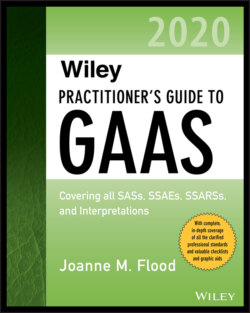Читать книгу Wiley Practitioner's Guide to GAAS 2020 - Joanne M. Flood - Страница 258
Timing
ОглавлениеWhen determining the timing of tests of controls, the auditor should consider whether audit evidence is needed about how the control operated as of a point in time or how it operated throughout the audit period. (AU-C 330.11) This determination will depend on the auditor’s overall objective. For example, to test the controls over the entity’s physical inventory count, the auditor’s objective would be related to how the control operated at the point in time the physical inventory count was taken. However, to modify the nature, timing, and extent of, say, revenue transactions or accounts payable, the auditor would want to test the operation of controls throughout the audit period.
When further audit procedures are performed at an interim date, the auditor should consider obtaining information about significant changes to controls tested and the additional evidence that is necessary for the remaining period. (AU-C 330.12)
If certain conditions are met, the auditor may use audit evidence about the operating effectiveness of controls obtained in prior audits. These conditions include the following:
The auditor should obtain audit evidence about whether changes to the controls have occurred since the prior audit. If the controls have changed since they were last tested, the auditor should test the controls in the current period to the extent they affect the relevance of the audit evidence from the prior period.
The auditor should test the operating effectiveness of controls at least once every third year in an annual audit. When there are a number of controls for which the auditor determines that it is appropriate to use audit evidence in prior audits, the auditor should test the operating effectiveness of some controls each year.
(AU-C 330.14)
NOTE: When considering whether it is appropriate to use audit evidence about the operating effectiveness of controls obtained in prior audits, the auditor should consider matters such as:
The effectiveness of other elements of internal control, including the control environment, the entity’s monitoring of controls, and the entity’s risk assessment process
The risks arising from the characteristics of the control, including whether controls are manual or automated
The effectiveness of IT general controls
The effectiveness of the control and its application by the entity, including the nature and extent of deviations in the application of the control from tests of operating effectiveness in prior audits
Whether the lack of a change in a particular control poses a risk due to changing circumstances
The risk of material misstatement and the extent of reliance on the control
(AU-C 330.13)
In general, the higher the risk of material misstatement, or the greater the auditor’s reliance on controls, the shorter the time period that should elapse between tests of the controls.
